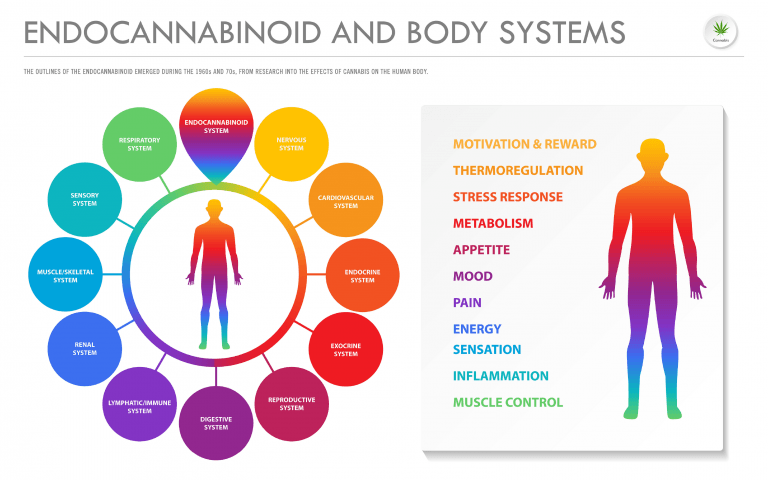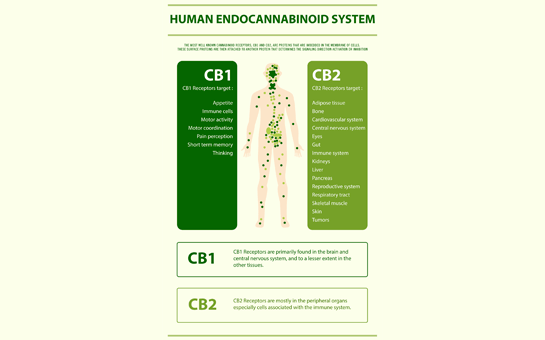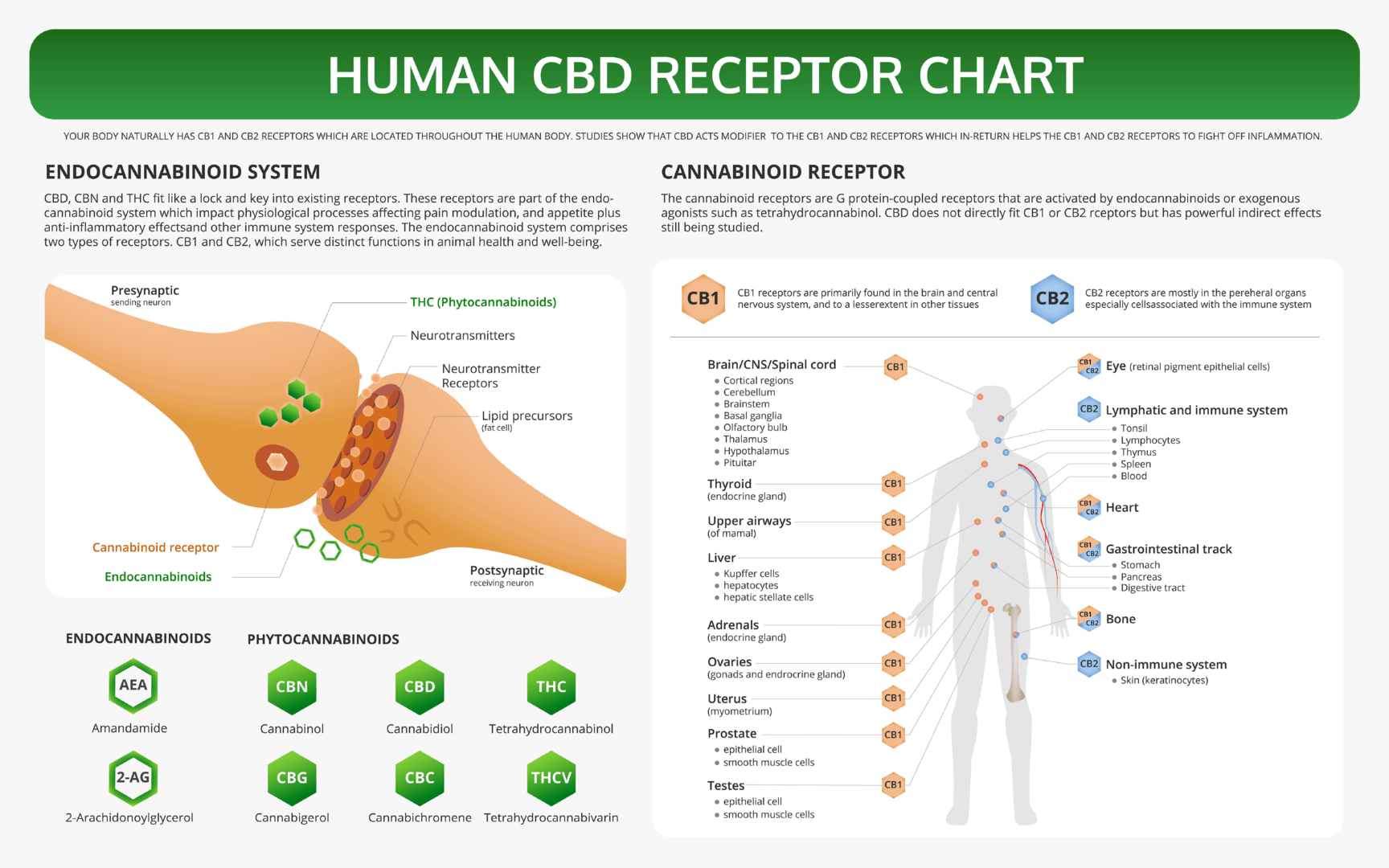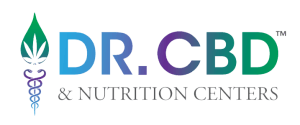What is the Endocannabinoid System?

The Endocannabinoid system is one of the most important physiologic regulatory systems. It plays a primary role in maintaining our health and helps to keep our bodies in a state of homeostasis and balance. It assists and facilitates the interaction between different cell types throughout our bodies, impacting how we feel, think and react. We naturally produce endocannabinoids that modulate the ECS. Two of the main endocannabinoids are Anandamide (AEA) and 2 arachidonyl glycerol (2-AG). Each of these has different physiological functions. Our bodies have CB1 and CB2 receptors that interact with endocannabinoids and phytocannabinoids.
The ECS is regulated by the interaction between cannabinoid receptors (CB1, CB2, TRPV1, and 5-HT1A), endocannabinoids (AEA, 2-AG), and regulatory metabolic and catabolic enzymes, FAAH (fatty acid amide hydrolase), and MAGL (monoacyglycerol lipase and others). Dr. Raphael Mechoulam is responsible for discovering AEA in 1992, and his research in the mid 1960's led to his discovery of THC.
AEA functions in the body to give pleasure, happiness, and euphoria. It helps to cope with stress and decrease anxiety. It enhances libido and reduces pain levels, cortisol and inflammation.
It has a greater affinity for CB1 receptors than CB2 receptors and is metabolized by FAAH into arachidonic acid. 2-AG regulates immune function, reduces inflammation, has neuroprotective effects in glial cells, suppresses seizure activity, and regulates our brain-gut axis. 2-AG has a longer half-life than AEA and is 200 times more powerful than AEA. It's the main activator of CB2 receptors and is a full agonist for CB1 and CB2 receptors.

How does THC and CBD interact with the ECS?

Phytocannabinoids interact with our endogenous endocannabinoids to help regulate our ECS. It is important to remember that the purpose of the ECS is to maintain homeostasis or balance. CBD is the phytocannabinoid that allows AEA to stay locked onto its receptor site for longer periods of time so that it can exert its physiological effects. CBD blocks FAAH from converting AEA into arachidonic acid. In addition, CBD activates the 5-HT1A serotonin receptor, which helps with anxiety, addiction, appetite, nausea, vomiting, and sleep. Moreover, it binds to TRPV1 receptors and helps moderate pain, inflammation, and body temperature. Martin A. Lee O'Shaughnessy's - Autumn201
The ECS can be hyperstimulated or can be in a deficient state. Both are undesirable and can cause a disruption of homeostasis. Depletion of the ECS can lead to migraine, headache, PTSD, chronic pain, IBS, and fibromyalgia. Overstimulation of the ECS can cause inflammation, obesity, insulin resistance, and mental health imbalance. Regulation of the ECS in crucial to maintaining health and well-being.
Articles
Care and Feeding of the Endocannabinoid System: A Systematic Review of Potential Clinical Interventions that Upregulate the Endocannabinoid System - McPartland JM, Guy GW, Di Marzo V
Abstract: The "classic" endocannabinoid (eCB) system includes the cannabinoid receptors CB1 and CB2, the eCB ligands anandamide (AEA) and 2-arachidonoyl glycerol (2-AG), and their metabolic enzymes. An emerging literature documents the "eCB deficiency syndrome" as an etiology in migraine, fibromyalgia, IBS, psychological disorders, and other conditions. We performed a systematic review of clinical interventions that enhance the eCB system--ways to upregulate cannabinoid receptors, increase ligand synthesis, or inhibit ligand degradation.
Endocannabinoid Signaling in Reward and Addiction - Nat Rev Neurosci
Brain endocannabinoid signaling influences the motivation for natural rewards (such as palatable food, sexual activity, and social interaction) and modulates the rewarding effects of addictive drugs. Pathological forms of natural and drug-induced reward are associated with dysregulated endocannabinoid signaling that may derive from pre-existing genetic factors or from prolonged drug exposure. Impaired endocannabinoid signaling contributes to dysregulated synaptic plasticity, increased stress responsitivity, negative emotional states, and craving that propel addiction. Understanding the contributions of endocannabinoid disruptions to behavioral and physiological traits provides insight into the endocannabinoid influence on addiction vulnerability.
Endocannabinoids A Promising Impact for Traumatic Brain Injury - Lesley D. Schurman and Aron H. Lichtman
Abstract: The endogenous cannabinoid (endocannabinoid) system regulates a diverse array of physiological processes and unsurprisingly possesses considerable potential targets for the potential treatment of numerous disease states, including two receptors (i.e., CB1 and CB2 receptors) and enzymes regulating their endogenous ligands N-arachidonoyl ethanolamine (anandamide) and 2-arachidonyl glycerol (2-AG). An increase in brain levels of endocannabinoid to pathogenic events suggests this system plays a role in compensatory repair mechanisms. Traumatic brain injury (TBI) pathology remains mostly refractory to currently available drugs, perhaps due to its heterogeneous nature in etiology, clinical presentation, and severity. Here, we review pre-clinical studies assisting the therapeutic potential of cannabinoids and manipulations of the endocannabinoid system to ameliorate TBI pathology.
“Prevention Is Better Than Cure”
DESIDERIUS ERASMUS

HUMAN ENDOCANNABINOID SYSTEM

ENDOCANNABINOID

